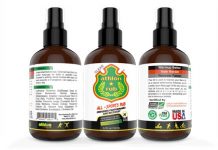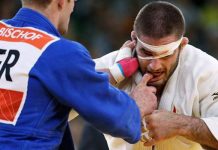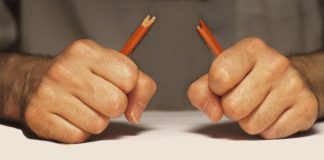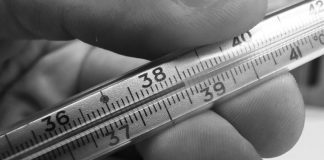I was asked to teach Dojo Medicine concepts at the Joe Lewis Research Conference in Tampa, Florida in 2012. Joe wanted the format to be open in order to facilitate JLFS Instructors, black belts, and attendees to ask whatever they felt might relate to the topic of Dojo Medicine. The questions from the session focused on training and from these inquiries common themes emerged. The discussion points from the conference participants will be the subject of this series of Dojo Medicine.
1) “When is a student properly warmed up?”
2) “Any tips on hydration and heat?”
3) “As an instructor, what do I need to know about sport drinks?”
4) “Can you explain principles of stretching, flexibility and how they relate to musculoskeletal injuries and recovery?”
5) Finally, “Can you tell us about oral supplements used for joint health?”
In this discussion, I will address the first three questions, as they are related. The stretching and supplementdiscussions will be subjects of future articles.
Training and Warm-Up:
Warm up periods, hydration, sport drinks, heat injuries and their management, as well as their prevention, are all related concepts. It’s hard to discuss these without talking about the entire group. Our discussion on training started with a common question?
“When in general, are students ready for heavier training, heavier exertion, and more focused physical activity?”
Concept One – (Core Temperature)
Core temperature is that point at which a student begins to perspire. It is an indication that the cooling mechanisms are functional. The muscles have good blood flow, vessels are open (dilated) and the student is generating heat! This is referred to as core temperature. It is a good indication that students are ready for heavier training with reduced risks of injury. Not reaching core temperatures before attempting excessive skill sets can predispose students to strain and sprain injuries, a recipe for disaster. Working up a “good lather” greatly reduces strain and sprain. Of course, the devil is in the details. Cooling is also tantamount for successful prolonged training regimens and longer training periods mandate re-hydration. Students only have so much fluid to use for active cooling before they begin to develop hydration deficits and heat stress begins to degrade performance. This leads to the follow up questions on heat stress, hydration and sport drinks.
There was a study done in 1996 prior to the Atlanta Olympic Games. The study looked at how much fluid a trained athlete could loss during strenuous activity? The answer is a stunning amount! Trained athletes can loss up to 1.5 liters of fluid in an hour during heavy physical exertion. In extreme environments and activities, such as mountaineering, marathons, etc. it can be as much as 15 liters in a single day – (P. Auerbach, Handbook of Wilderness Medicine, Fourth Edition). That amount of fluid loss during exertion is dangerous and it demonstrates that when training, students must be allowed to rehydrate. In hospital settings we use intravenous fluids to correct large fluid deficits more quickly. Fluid deficits can occur in very short order. Heavy exertion in prolonged martial arts training, testing, seminars, and tournaments are all recipes for dehydration and increased heat stress. Rehydration on a regular basis is paramount. A good general rule is fluid intake at least every thirty minutes. I recall one teacher whose rule was “when he was thirsty, they were thirsty”! Obviously a bad rule, as the baseline fitness of most instructors is generally higher. Also instructors tend to be more efficient at what they do and expend less energy during training sessions. The point is allow time for fluid intake and breaks. An important point to remember is that students can loss between 2 % – 4% of their total bodyweight before they even begin feel thirsty. In other words, they are already deficient in fluid volume before they even want to drink!
Signs to be aware of as an instructor regarding hydration and fluid loss are: irritability, headaches, occasional cramping, or profuse sweating in students. Generally, ten minutes of rest with hydration for every one hour of heavy training is a good idea. It is the current rule of thumb during military operations, but this varies greatly based on humidity, altitude, temperature, and of course, mission. For martial artists in the dojo these variables are more easily controlled, i.e. turn the heat up or down, have fluids available during training, and offer breaks during prolonged seminar sessions. Structure your classes around forty minutes or so,If training for full-contact or strenuous MMA events, then adjust the training intervals for more frequent breaks, rehydration, and rest. A really good trick for instructors is to have a plant mister or sprayer at their dojo. When students are heat stressed spray them down with the mist! It helps active cooling and it just plan feels good, particularly when overheated from heavy training. Bottom line up front-watch your students closely and have fluids available!
Finally a few words on sport drinks during operational experiences on numerous deployments I have often used and even recommended electrolyte replacement drinks for my soldiers. Many of the older versions are heavy on sugar and solute loads. These drinks can be dangerous as they can actually pull fluid from the gut and cause temporary fluid shifts, which make proper rehydration more difficult. If you take the recommended mix amounts and cut those in half by adding additional water, it is better tolerated and fluid absorption is improved. Some of the newer pre-mixed drinks, like G-2 are well researched fluids and tend to work better in fluid replacement. I have used these fluids during an ascent on Mt. Blanc near Chamonix and also on several deployments,they work well. There are many of these on the market so shop around and have them available. Last thing, one of the senior instructors asked me about salt tablets in training? In general, I do not recommend salt tablets. It is like a bolus of salt in a concentrated area and in my opinion, they cause more issues then they solve. I understand the old school guys out there and I remember my old Drill SGT from the mid-seventies making us eat three or four salt pills at a time!, “Because they are good for you troopers!”
Wisdom, the concept of learning from our mistakes and not repeating them, don’t use salt tablets, there are far better preparations available for electrolyte replacement.






